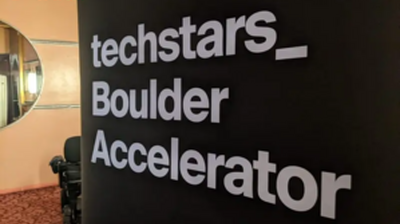Technology
Will AI replace Colorado teachers? Here’s what experts say.
LONGMONT — The questions that baffle Mai Vu’s students, that frustrate them one second and motivate them the next, also foreshadow the future.
At first glance, their work seems ordinary. Scattered across a classroom, they each pore over their laptops, eyes firmly trained on their screens like any other teens.
But the queries consuming each of them hint at the kinds of challenges high schoolers will take on in coming years: How do you teach a camera to spot pedestrians and stop signs from inside a self-driving car? What does it take to speed up a pizza order in a short-staffed restaurant? Can gaming Technology help students better master a second language?
Both the students and their projects are part of a new wave of learning that educators say will transform how kids grasp information. The engine driving their work: artificial intelligence.
“This is a tool that is going to be a part of our future world,” said Michelle Bourgeois, chief technology officer for St. Vrain Valley School District, where Vu’s students are experimenting with AI. “How do we make sure that we are ready not only to use it, but also to make sure our students are ready to use it?”
As AI technology rapidly advances and raises substantial questions about the future of work, some Colorado schools are at the dawn of exploring how AI could revolutionize classrooms. Even while still in its early stages, the technology is helping teachers with the heavy lift of daily lesson planning, communicating with families and tailoring their instruction to individual students. It can also give kids more seamless ways to learn at their own pace or put sophisticated ideas — like a camera trained for a self-driving car or a pizza bot — in motion.
But embracing AI in a way that accelerates students’ academic success, as opposed to offering them a shortcut, will require schools to introduce the technology gradually, both experts and educators say. Meanwhile, leaders and teachers across districts are grappling with how to keep both students experimenting with AI and their data safe.

Questions about how AI will reshape education prompted the Colorado Education Initiative to form a statewide steering committee last year with San Francisco-based nonprofit The AI Education Project to shepherd schools through complex decisions about how to blend AI into their classrooms. The steering committee, composed of educators, district leaders, scientists and business professionals, will focus on developing a cohesive plan to point schools, policymakers and industry experts in the same direction as more students delve into AI, said Rebecca Holmes, president and CEO of state initiative.
“We’re at a moment where this is moving so quickly that whether you’re a teacher in a classroom or a superintendent or a school board member, you’re sort of looking for trusted guidance,” Holmes said. “And you also don’t want to move too slowly. You don’t want to get completely outpaced by another state or another district.”
The AI Education Project, a 5-year-old nonprofit, is one resource working with schools across the country to help them figure out how to use AI responsibly and give teachers a “foundational understanding” of the technology so that they can decide how it will best enhance their work with students, said Christian Pinedo, chief of staff for the organization.
☀️ READ MORE
Colorado will get at least $100 million, possibly $1 billion, from infrastructure bill to end digital divide
How southern Colorado is working to bridge the digital divide in schools
A rural Colorado school district is spending $3 million to connect kids’ homes to the internet. Will it be enough?
“We’re really trying to establish this call to action to schools, to educators, to students that you don’t need to know how to build or code an AI model, but you do need to know or build critical thinking skills around what AI means in society,” Pinedo said, “because the reality is that AI is well ingrained into our everyday lives. Students should be given the ability to think about what are the societal impacts, the ethical impacts, the emotional impacts of AI technologies around them.”
AI is making its way into the classroom at a time “education is long overdue to be shaken up and to be rethought,” he added.
Public Education has long been rooted in the idea of measuring students and their intelligence based on how they perform on assessments like multiple choice tests or essays — which AI can master just as well as students. That’s why it’s becoming increasingly critical for schools to start prioritizing other skills that AI cannot replicate, such as collaboration and empathy, Pinedo said.
“It’s no secret that in the future, your coworkers are not all going to be human,” he said. “You’re going to have AI agent coworkers, and a lot of companies already do. Building those skills among students is going to be really key for them to succeed in that workspace.”
How do you empower kids to use AI as a tool, rather than a replacement, for learning?
St. Vrain Valley School District, which has a statewide reputation as a pioneer in Technology and innovation, started ramping up its use of generative AI among teachers and administrators last fall and is determined to train all educators on generative AI by the end of the school year, district administrators say.
“Our goal this year,” Bourgeois said, “has been to prepare our teachers for the world that we know our students are going to get to thrive in.”

The district, which has about 32,500 students in preschool through 12th grade, has nudged teachers to play around with AI in simple ways, creating a bingo game that gives them ideas about how to use AI, such as planning a weekend trip, a workout routine or a class rubric. Teachers then earn professional development credit for filling out the card.
A key part of the district’s approach in coaching teachers on using AI has been focused on reinforcing safety of students and their personal information.
Data shared for a specific use could be used in a different way, Bourgeois said. “So be very intentional about what data you share with an AI,” Bourgeois said.
-

 Technology6h ago
Technology6h agoBreaking up Google? What a Chrome sell-off could mean for the digital world | The Express Tribune
-

 Technology20h ago
Technology20h agoAI harm is often behind the scenes and builds over time – a legal scholar explains how the law can adapt to respond
-

 Technology22h ago
Technology22h agoNewborn planet found orbiting young star, defying planet formation timeline | The Express Tribune
-

 Technology1d ago
Technology1d agoAwkwardness can hit in any social situation – here are a philosopher’s 5 strategies to navigate it with grace
-

 Technology1d ago
Technology1d agoNo need to overload your cranberry sauce with sugar this holiday season − a food scientist explains how to cook with fewer added sweeteners
-

 Technology1d ago
Technology1d agoTeslas are deadliest road vehicles despite safety features: study | The Express Tribune
-

 Technology1d ago
Technology1d agoThere Is a Solution to AI’s Existential Risk Problem
-

 Technology2d ago
Technology2d agoUS pushes to break up Google, calls for Chrome sell-off in major antitrust move | The Express Tribune


























